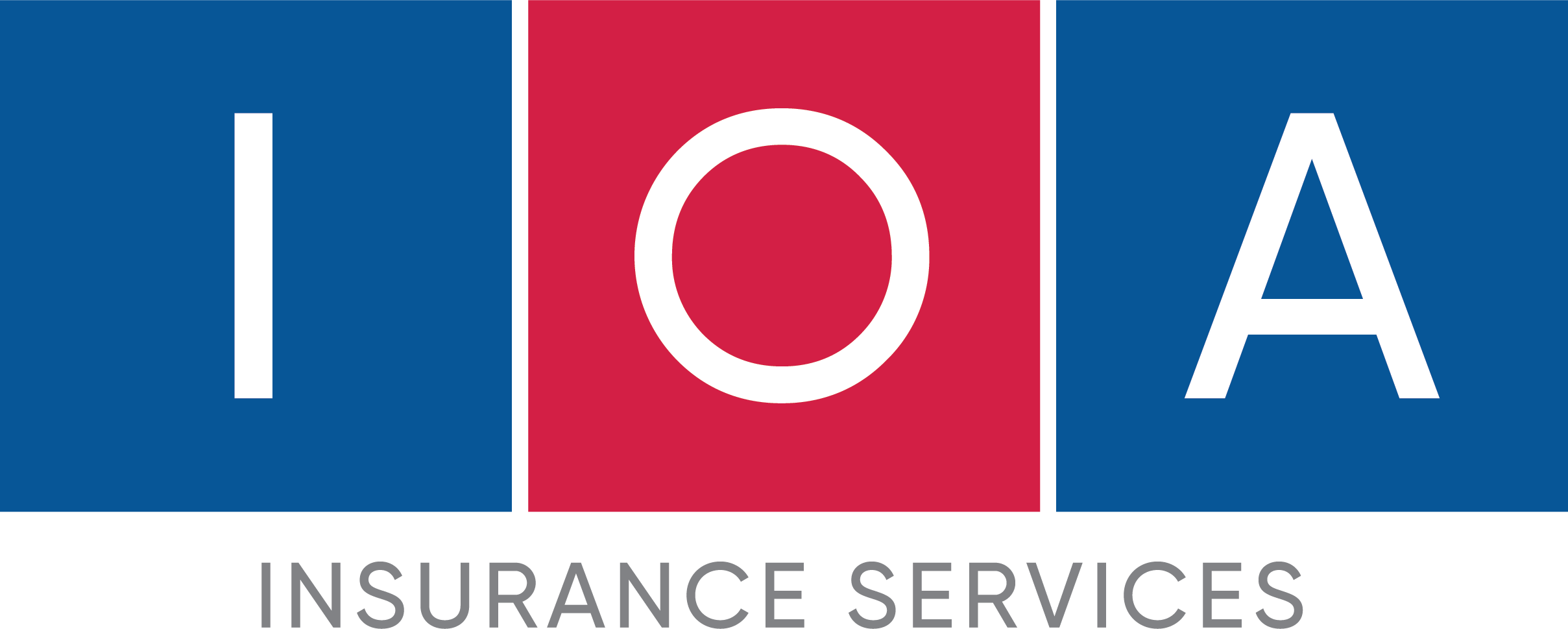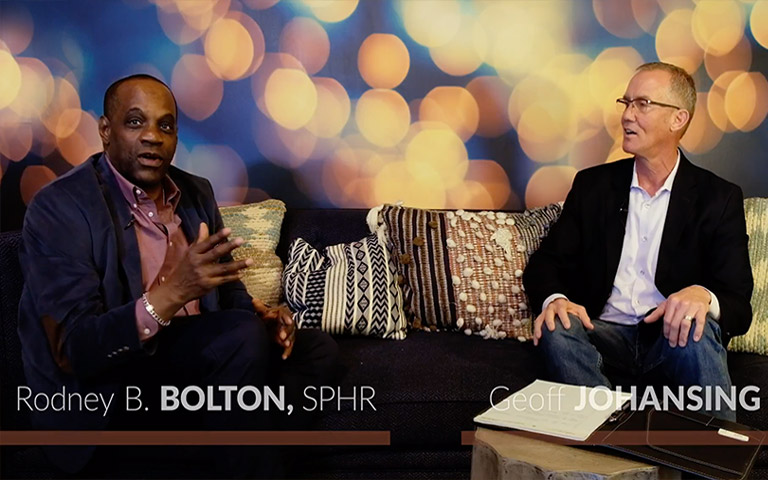Podcast: Play in new window | Download (Duration: 9:02 — 20.7MB)
Subscribe: Apple Podcasts | Email | RSS | More Subscribe Options
An interview with Rodney Bolton on how keeping employees engaged is a key tool for a happy work environment.
Geoff Johansing is speaking with Rodney Bolton (HR Bizz). HR Bizz’ services are designed to make a company function more efficiently and effectively. He works with a vast array of clientele ranging from local, national and international companies providing them with human resource strategies to propel them to the next level. His focus on employee satisfaction and getting the right people in the right positions has allowed his clients to achieve their desired results. By using tools such as evaluating the climate or tone of a company, surveys, attendance, how well employees work together, how well management and employees interact together and encouraging team-building exercises you promote an environment where employees are happy and engaged.
For more “Happy Employees” insights, join our LinkedIn Group!
About Rodney Bolton
HR Bizz
Los Angeles, CA
FULL TRANSCRIPTION:
GEOFF JOHANSING: Hello everyone. I am Geoff Johansing, here again with another video for my happy employees. I work with Insurance Office of America, serving middle market industries. Those 100-plus employees and million-plus in revenue are the clients that I’m looking for. And I’m here today with Rodney Bolton. Rodney Bolton owns HR Biz, and thank You, Rodney. Would you like to introduce yourself?
RODNEY BOLTON: Thanks for having me Geoff. I’m Rodney Bolton, from HR Biz. HR Biz is a human resource consulting firm located in Los Angeles, California. We’re a broad-based consulting company, and our core function is human resource management, strategic analysis, and creating an environment for happy employees.
GJ: All right, Rodney, well…
RB: Thank you.
GJ: Hey, I’ve got a few questions I’d like to talk to you about and I’ll ask you and see how you can align.
RB: Great.
GJ: How do you define and measure employee engagement?
RB: So, when you’re looking at employee engagement, Geoff, what we like to look at is how well do the employees work together? How well do employees work together in different channels? Are they coordinating well or is there any turmoil in the workforce? We also like to know exactly where is that medium between workers and management? It’s a critical junction where work always intersects with people. Our goal is to make sure when the two meet, management and employees, that there’s a happy medium.
GJ: Okay
RB: So the definition is always, right, are workers happy?
GJ: Alright, and then, what should employers do to make sure that their employees are engaged? How do you see yourself handling that?
RB: Well, I think the first thing you do, you have to really engage the climate. Take climate surveys. You can use, there’s a lot of tools out there now that you can use to really measure employees to see if they’re happy. You can also look at attendance. Attendance is a very good barometer. You know, you’ll find that employees that are engaged readily come to work. You also can look at turnover. Turnover is a tremendous tool in evaluating how successful your company is. We know that there is a triangle, and that triangle at the top is turnover, and the bottom is retention, and on the left is engagement. So you need to always align turnover, engagement, and attendance. And you’ll always be able to measure how well your employees are doing.
GJ: Now, when you refer to climate what exactly does that mean?
RB: So climate tells me, just like it would in any other situation, warm or cold. A cold climate is if you say hello to an employee and they grunt at you. A warm climate is if you say hello, they engage you. How are you doing Rodney? I’m fine today, Geoffry. How are you?
GJ: Ok
RB: The same thing. So the climate is tone… if you look at a lot of startup companies and high-tech companies, what you’ll find is that employees really want to be there. Employers need to know this because, what this does, is it creates a positive bottom line for them. It reduced recruiting costs.
GJ: MM-hmm.
RB: It reduced turnover cost, right?
GJ: Absolutely.
RB: And it maintains a steady workflow, which creates a product that is much better for the employer. You don’t have to worry about people coming up to speed, new people coming in.
GJ: Right.
RB: You want to create an environment where people really want to be there. Look, we spend one-third of our life at work. Why not be able to enjoy where we work? It’s important for people to know that.
GJ: I believe also, that when you have an engaged employee that’s happy at work, your clients also know that. They can see that. You know, there’s a saying, “you can see a smile through the phone… or hear a smile through the phone. So, I truly believe in what you’re saying… Um, How do you maintain employee engagement?
RB: So, I like to maintain it through team-building.
GJ: Ok.
RB: Through company-sponsored events. You know, a lot of employers say to me, every day, “Rodney, we just can’t afford to spend a lot of money on team building.”
GJ: Alright.
RB: What I tell them is, a great team-building exercise is potluck. You know, we’re in a very diverse environment today. People like this show off their cooking and various ethnic cuisine and food.
GJ: oh, yeah.
RB: A potluck is a tremendous one.
GJ: Okay.
RB: We also had an employer about two months ago… What we asked them to do is have every employee stop ten minutes before lunch, and we’ll take walks together. We circled the warehouse, right? What we did, we found that we really bonded together.
GJ: Okay.
RB: Which is really important, right?
GJ: Okay.
RB: Another thing we like to do is we like to do engagement studies. Engagement studies are really classical ways of measuring how a person feels about the company, right? And we think they do a lot of things anonymous. Well, how about a dropbox or a tip box?
GJ: Okay.
RB: So we can really find out what you’re feeling. What’s the pulse of a company.
GJ: Alright. Umm. What other kinds of tools, would you say, are available in your toolbox – to find out where a company’s at with regards to employee engagement?
RB: Alright. So one, I like surveys.
GJ: Okay.
RB: I also like a thing called “brown paper bag”. And what a brown paper bag is, I asked the highest executive to go to mid-management and just bring his lunch and sit down to lunch and engage with them. I also like to pull people from the warehouse or from the front line, and really interact with management as well too.
GJ: Okay.
RB: That’s a really great tool to find out what other people are thinking, right? Another thing is, I like to do is, I like to bring different events, like bring your dog to work, bring your kids to work, right?
GJ: Okay.
RB: And I think that one of the things that you’ll find, that those things are really fascinating, in essence, because what they do is you get to know a person on a personal level. Alright.
GJ: Right.
RB: And so, what… it’s really no mystery, right, if we can take away the element of surprise when you’re dealing with another individual; you know what they think, how they work, how they react. What you’ll find is you’ll bring more cohesion to the workforce.
GJ: Okay, in my experience, I find that employers that have a well-engaged workforce… It’s because they hire well.
RB: Yeah.
GJ: Are there other things, you see that…
RB: You know, well Geoff, I think you hit that, you know, hit a good point. Hiring is tremendous. And one of the things that I like to recommend is great employment screening. Okay, right? Not screening to the point that you just have a homogeneous tech culture, right. But to the point where you’re able to predict how an employee would work. You know test, integrity test, a really good barometer. They measure a person not only from an aptitude standpoint but what they’re likely to do.
GJ: Ok.
RB: Onboarding is tremendous. right. What onboard mean tells me is that I want to bring you into my culture. My employment culture. My coach once told me, he says “You know Rodney, I can beat you guys with your players and I can beat you guys with my players.” And what he was saying is “it’s not the players, it’s the culture.” Okay. It’s teamwork. It’s cohesion. So that’s really important to me.
GJ: Alright. Well Rodney, thank you very much.
RB: You’re welcome.
GJ: What kind of clientele are you looking to be working with?
RB: So, I generally work with a variety of clientele. I really like to say we’re industry agnostic, right? So what we do is we work with anyone that wants to see their workforce engaged. We provide HR services. Our services are designed to make a company function more efficiently and effectively.
GJ: Okay.
RB: So our goal is looking for companies that we can bring value to.
GJ: And then you’re national? International?
RB: Yeah, so we’re an international company. We have clients from Zhejiang, China to Austin, Texas. We can work remotely. We have our remote HR portal. We also have our retainer brief service where we visit employers once a month to make sure that they’re compliant; to make sure that they have proper policies, procedures, hiring. We also integrate well with every vendor that you have; 401k, worker’s comp, medical insurance to make sure that every person that provides service to a company is working together strategically, right. For the same outcome.
GJ: Got it. Yeah, Rodney Bolton again Rodney Bolton with HR Bizz. I’m Geoff Johansing. Thank you very much, everyone.

